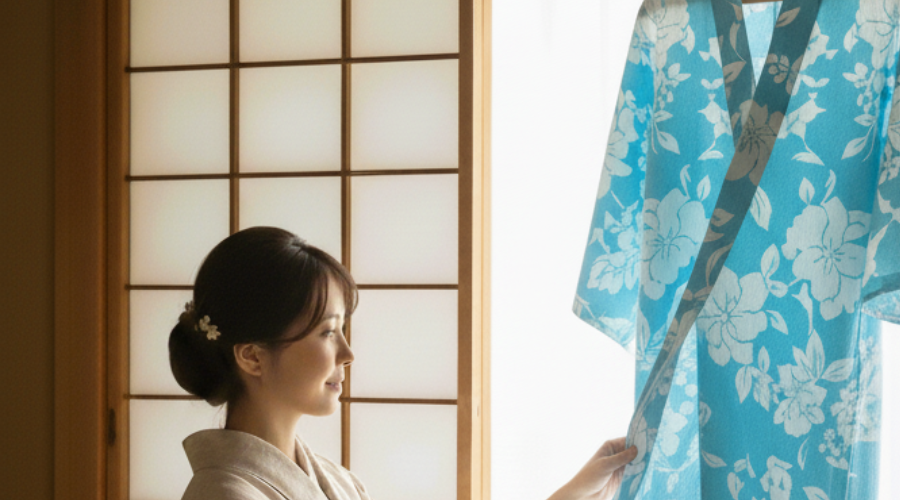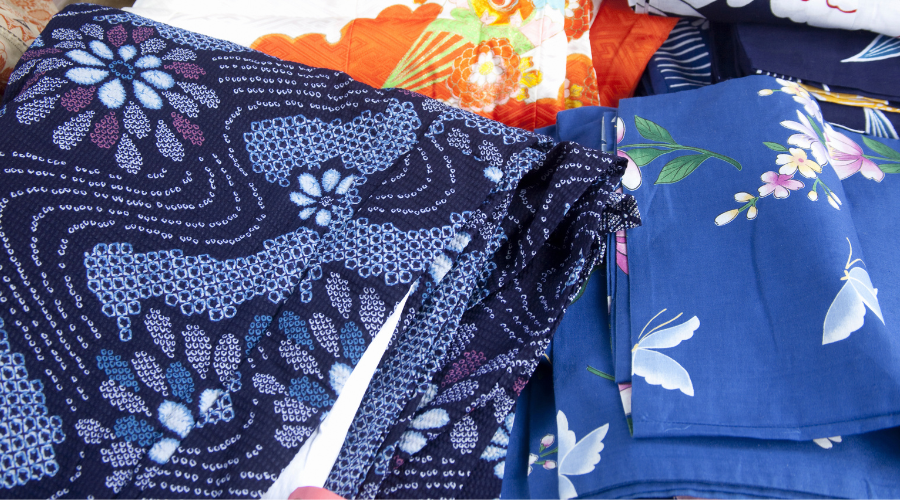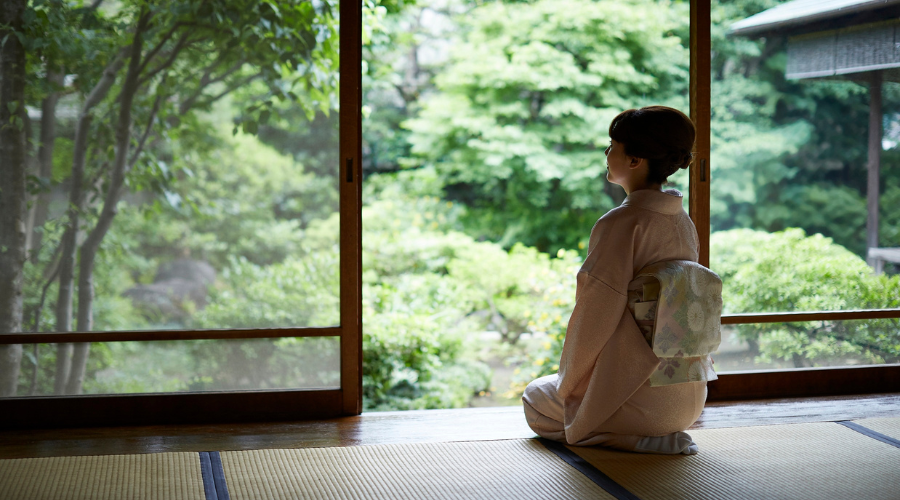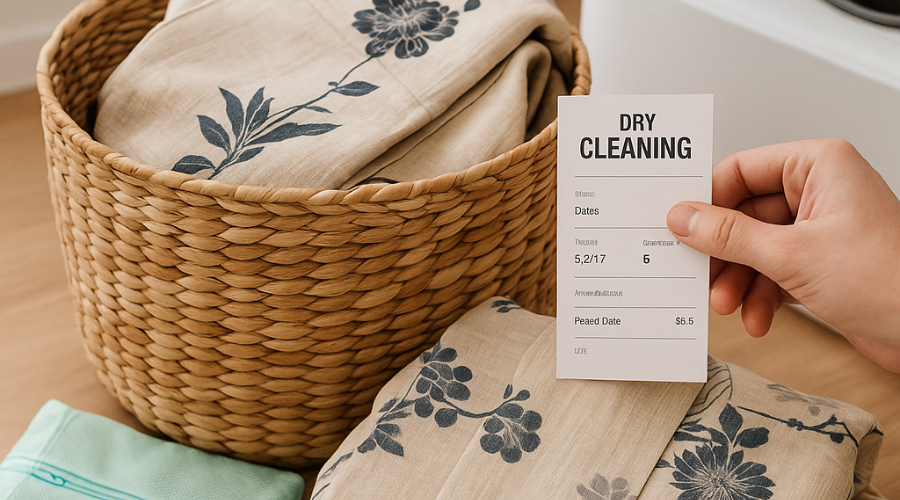Are you wondering if your summer kimono has absorbed sweat—or if it’s safe to store it away as is?
To enjoy your favorite piece for years to come, proper care and storage are essential.
Summer kimono are made from delicate fabrics that easily absorb moisture and are affected by humidity.
But with just a few simple steps, you can keep your kimono looking as beautiful as the day you wore it.
In this article, I’ll share gentle, practical tips—based on my experience as a kimono dresser—on everything from quick after-wear care to identifying stains that should be handled by professionals, as well as how to store your kimono for the long term.
Every tip here is easy to start using today.
Let’s make sure your summer outings are comfortable and stylish with your beautifully cared-for kimono.
- Right After Wearing: Quick Same-Day Care to Remove Sweat and Moisture
- Material-Specific Care Tips for Summer Kimono: Linen (Asa), Silk, and Polyester
- How to Make Your Summer Kimono Last: Care and Storage Tips
- When to Trust a Professional: Know the Line Between Safe Home Care and Risky DIY
- Conclusion: Keep Your Summer Kimono Fresh and Comfortable with Proper Care
Right After Wearing: Quick Same-Day Care to Remove Sweat and Moisture

There are two main types of summer kimono: hitoe (unlined) and usumono (sheer).
A hitoe kimono is made from a single layer of fabric without lining, making it light and comfortable to wear.
It is typically worn in June and September—perfect for the early summer or lingering heat of late summer.
An usumono kimono, on the other hand, is reserved for the hottest months of July and August.
Common fabrics include ro, sha, and asa (hemp), which are all breathable and create a soft, translucent look.
Summer kimono come in various materials such as silk, cotton, and polyester, and in recent years, washable types for home care have become popular.
However, because usumono fabrics have a loose weave and delicate texture, they require special care to avoid snags and friction damage.
While these kimono are light and airy, they are also highly sensitive to sweat and humidity.
Even if they appear clean, trapped sweat can lead to yellowing or mildew over time.
In particular, usumono fabrics are prone to fiber damage if left damp, so prompt care is essential.
Material-Specific Care Tips for Summer Kimono: Linen (Asa), Silk, and Polyester

Summer kimono are often made from materials such as linen (asa), silk, and polyester.
Linen is strong against water and can usually be washed at home, which makes it convenient for everyday wear.
However, it wrinkles easily, so timing when to dry it and managing the iron temperature are key to keeping it neat.
Silk (especially ro and sha types) has a graceful sheen that makes it highly prized, but it is vulnerable to sweat and humidity, which can cause yellowing.
That’s why same-day care after wearing is essential for silk kimono.
Polyester has become increasingly popular in recent years for its easy home care.
It’s light, durable, and washable, but since it’s sensitive to heat and prone to static electricity, extra care is needed during ironing and storage.
Each fabric has a different texture and level of breathability, which means care methods also vary slightly.
Understanding the unique qualities of each material helps prevent problems caused by sweat or moisture, allowing your kimono to stay beautiful for many seasons to come.
How to Care for and Handle Linen Kimono
Linen kimono are light, cool, and effortlessly stylish — one of the best choices for summer.
Another great advantage is that they can be cared for at home, giving you peace of mind even during the sweaty season.
Here are some simple care tips to help you keep your linen kimono beautiful and fresh for years to come.
1. Removing Sweat (Everyday Care)
This quick method focuses only on areas where sweat tends to accumulate.
Lightly mist the collar, underarms, and other sweaty spots with water, then gently press with a clean dry cloth.
Blot rather than rub—think of it as transferring the moisture and impurities into the towel.
Even without washing every time, this simple sweat removal keeps your kimono fresh and clean.
2. Washing (At the End of the Season)
Cold water washing is recommended, as hot water can cause fading or fuzzing.
If washing by hand, fold the kimono neatly and gently press it in water mixed with a neutral detergent.
Avoid friction, and after rinsing, blot the water with a bath towel instead of wringing.
If you prefer using a washing machine, place the kimono in a laundry net and select a gentle or “delicate” cycle with a short spin (within one minute).
Over-spinning can cause wrinkles that are difficult to remove, so keep it brief.
3. Drying
When drying, hang the kimono on a kimono hanger or a sturdy pole.
Smooth out the fabric along the shoulders and sleeves with light taps to keep its shape.
The natural wrinkles of linen are part of its charm, so embrace them as texture.
If needed, lightly mist with water to help the fabric settle naturally.
※ There are differing opinions about ironing linen kimono — some say “no ironing is best,” while others claim “high heat is fine.”
The truth is, it depends on the specific fabric.
A good rule of thumb is to judge based on where the wrinkles are and whether ironing might flatten the fabric’s natural texture and character.
| Type of Wrinkle | Best Treatment | Professional Insight (Why OK / NG) |
|---|---|---|
| Light wrinkles (overall) | Light misting + hand ironing (smoothing gently by hand) is enough. | NG reason: To avoid flattening the natural crispness and uneven texture (shibo) unique to linen. |
| Deep wrinkles (collar / hem area) | Medium heat (140–160°C), no steam. Press from the inside using a pressing cloth. | OK reason: Clean lines around the collar and hem are essential. Linen tolerates heat well, so partial pressing is effective. |
| When you want an overall crisp look | When about 80% dry, use low to medium heat for a light press. | NG point: For strongly textured weaves (like shibo or koyachijimi), ironing too hard will crush the raised texture. Press lightly and sparingly. |
How to Care for and Handle Silk Kimono (Ro & Sha)
Silk kimono are delicate and sensitive to humidity and friction.
With proper care, however, their elegant sheen and soft texture can be preserved for many years.
1. Avoid Washing
Do not wash silk kimono at home.
If you must, use a detergent specifically made for silk and let it air-dry in the shade.
Direct sunlight can cause yellowing and fading.
2. Light Brushing After Wearing
Simply brushing off dust with a soft clothing brush is often enough.
Avoid stiff brushes that may cause friction—gentle strokes are the key.
3. Stain Removal Basics
For light stains such as water or tea, blot gently with a dry cloth instead of rubbing.
For oil stains or soy sauce spills, leave it to a professional cleaner rather than trying to treat it yourself.
4. Moisture Control
Silk is highly sensitive to humidity.
Use dehumidifying sheets or moisture absorbers in your storage area, and always make sure the kimono is completely dry before storing it.
5. Insect Prevention
When using insect repellents, wrap them in paper to avoid direct contact with the fabric.
Do not mix different types of repellents, as the chemical reaction can cause discoloration.
💡 Quick Tip
For silk kimono, the golden rule is “dry it the same day, not wash it right away.”
Consistent light care will help preserve its natural sheen and firmness for years to come.
How to Care for and Handle Polyester Kimono
Polyester kimono are durable, wrinkle-resistant, and perfectly suited for today’s busy lifestyle.
However, they do have a few unique concerns—such as static electricity and potential color fading.
Advantages
Lightweight, durable, and easy to wash.
Polyester kimono dry quickly and maintain their shape well, making them highly practical.
Points to Note
Polyester is sensitive to heat and may develop fuzz or pilling due to friction.
During washing, be careful of color transfer and static electricity.
Care Instructions
- Washing: Use the hand-wash or delicate cycle, or place the kimono in a laundry net and wash on gentle mode.
- Drying: Air-dry in the shade. Avoid direct sunlight and tumble dryers.
- Ironing: Use a low-temperature setting with a pressing cloth. High heat can damage the fabric.
- Storage: Ensure the kimono is completely dry before storing it in a well-ventilated place.
💡 Quick Tip
Using an anti-static spray will make your polyester kimono noticeably more comfortable to wear.
With proper care, polyester kimono can serve beautifully for both everyday wear and formal occasions.
How to Make Your Summer Kimono Last: Care and Storage Tips

To enjoy your summer kimono for years to come, proper after-wear care and storage are essential.
Leaving sweat or humidity untreated can lead to fabric damage, yellowing, or even mold.
However, with the right daily care, you don’t need to send your kimono to professional cleaning after every wear.
Just by building a simple home-care routine, you can keep your kimono looking beautiful for much longer.
In this section, you’ll learn easy, practical tips for caring for and storing your summer kimono properly.
Protect Your Kimono with Sweat-Removal Care: Simple At-Home Maintenance
It’s only natural to sweat when wearing a summer kimono.
However, leaving it untreated can cause yellowing, mold, and fiber damage over time.
Since sending it to professional cleaning after every wear isn’t practical, it’s best to learn a few simple at-home sweat-removal care techniques to keep your kimono fresh and beautiful.
How to Remove Sweat (Quick At-Home Method)
- Lay your kimono flat on a clean surface and lightly mist the areas where sweat has accumulated.
- Using a soft towel rolled into a pad, gently press or tap the area—avoid rubbing.
- Repeat steps 1 and 2 to draw out any salt or residue trapped in the fibers.
- To prevent visible water rings, lightly mist a slightly wider area around the spot to blend it out.
- Let the kimono air-dry naturally in a well-ventilated place.
- Once completely dry, use a pressing cloth and lightly iron to smooth the fabric and restore its shape.
💡 Tip
Sweat becomes invisible once it dries, so if certain areas feel heavy or the wrinkles don’t smooth out easily, that’s a sign that sweat remains in the fabric.
Pay extra attention to the collar and underarm areas, as these spots are most prone to sweat stains.
Effective Moisture Control for Your Kimono
Natural fabrics often used for summer kimono—such as linen and silk—tend to absorb moisture easily.
Because Japan’s summers are hot and humid, leaving your kimono unattended can lead to mold or discoloration.
Before storing, always make sure the kimono is completely dry.
Taking it out once or twice a year to let it air out will also help prevent moisture buildup.
If you use a paulownia chest (kiri tansu) or a storage case, adding silica gel packets or dehumidifying sheets provides extra protection.
How to Prevent Insect Damage to Your Kimono
One of the biggest threats to your kimono is insect damage.
When humidity levels rise above 60%, insects become more active and can create tiny holes in the fabric before you even notice.
The key to keeping your kimono beautiful for years to come is simple — maintain good airflow in your storage space.
1,Regular Airing
Take your kimono out of the chest or storage case regularly and air it in the shade.
Letting fresh air circulate helps prevent mold and insect activity.
2,Cleaning the Storage Area
Dust that accumulates at the bottom of drawers or storage boxes can become a breeding ground for insects.
Wipe these areas clean and keep the storage space as dust-free as possible.
3,Proper Use of Insect Repellents
- Avoid Direct Contact:
Wrap insect repellents in thin paper or place them in a breathable pouch so they do not touch the kimono directly. - Use Only One Type:
Never mix different kinds of insect repellents.
Chemical reactions between them can cause stains or discoloration on the fabric, so always stick to one type.
When to Trust a Professional: Know the Line Between Safe Home Care and Risky DIY

Some stains and fabric issues can’t be completely resolved through home care — and certain problems are difficult to identify just by appearance.
If you notice any of the following signs, it’s best to stop handling the kimono yourself and consult a professional cleaner as soon as possible.
- Areas where sweat or skin oils have soaked into the fabric — especially along the inside of the collar and sleeve cuffs.
- Early signs of stains or mildew, such as small, pale spots or faint discoloration on the fabric.
【Professional Insight: Signs Only Experts Notice】
Even if a kimono looks clean, sweat can remain deep within the fibers.
If left untreated, this trapped moisture can cause yellowing and make the fabric difficult to restore later on.
After wearing your kimono, if the fabric’s natural texture — known as jifū — feels stiff or slightly rough to the touch, that’s a sign that sweat components are still present within the fibers.
Professional kimono cleaners offer more than just standard maru-arai (dry cleaning for oil-based stains).
They can also perform sweat removal treatments designed to eliminate water-soluble residues, choosing the right method according to both the fabric type and the kind of stain.
To protect your precious summer kimono, let an expert’s trained eye determine the best course of care.
Conclusion: Keep Your Summer Kimono Fresh and Comfortable with Proper Care
Summer kimono are light and elegant, yet delicate and highly sensitive to sweat and humidity.
That’s why both same-day care after wearing and proper seasonal storage are essential to keeping them in good condition.
For linen, enjoy its natural texture and keep it “no-iron.”
For silk, avoid humidity and friction — “handle it gently.”
For polyester, take advantage of its easy care and “keep it clean.”
By understanding the nature of each fabric, your kimono will last beautifully for many years.
The time spent caring for your kimono is a quiet, fulfilling moment of connection with the fabric itself.
With just a little care and attention, your cherished piece will continue to shine gracefully, season after season.
✿ Column: Fumi’s Kimono Diary ✿
When I work with summer kimono at dressing sites, I’m always reminded of one important thing:
the beauty of comfort over perfection.
It’s natural to sweat a little or for wrinkles to appear — that’s simply part of wearing kimono in the summer.
What truly matters is how comfortably and gracefully you can connect with the garment itself.
The cool touch of linen, the subtle luster of silk, the reassuring strength of polyester —
each fabric has its own charm and the joy of spending the season together.
Take time to get to know these materials, and enjoy the gentle elegance of summer kimono in your own way. ♡


